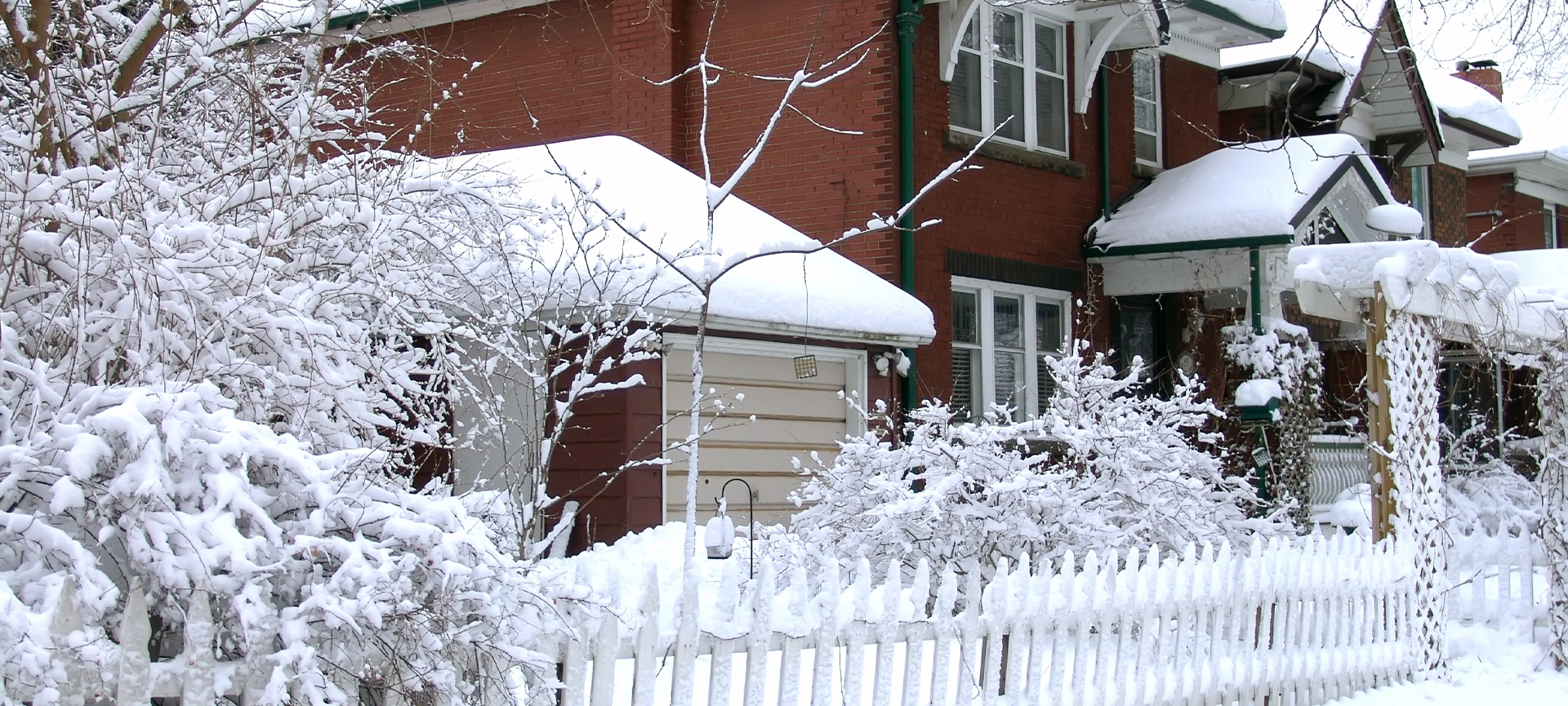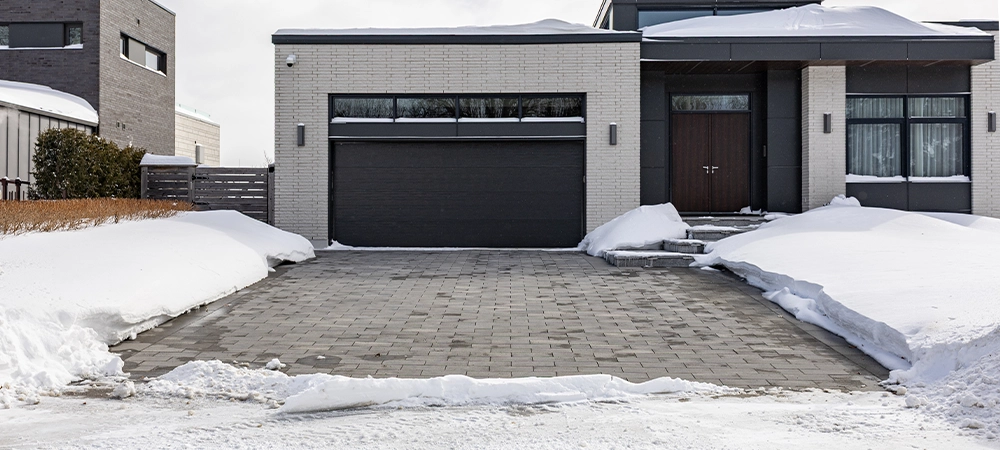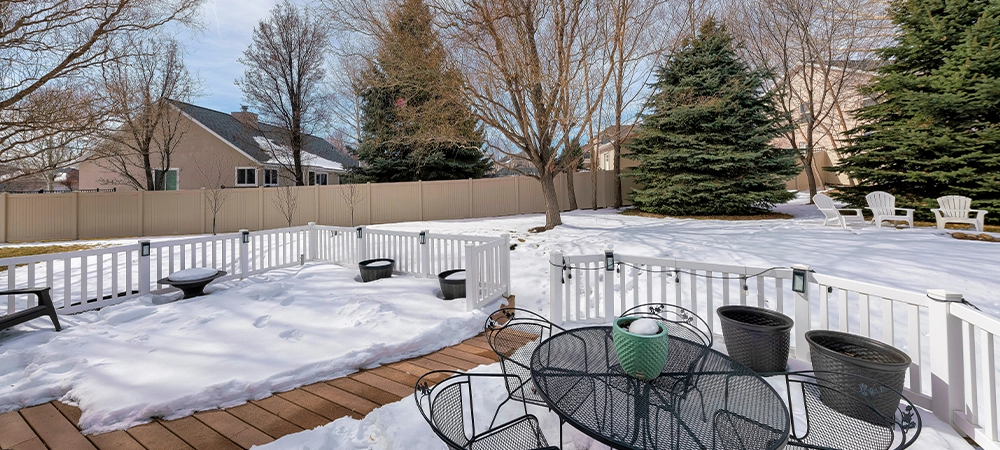How to Audit Your Property for Winter Safety Before the First Snowfall

Ontario’s first snow can arrive while Halloween decorations are still out, leaving little time to fix weak spots once the ground freezes. A winter safety audit identifies hidden risks (e.g. ice-dam leaks, burst pipes, and slippery walks) so you can act while temperatures are still above zero.
The checklist below blends quick DIY tasks with jobs for certified trades, giving homeowners, landlords, and property managers a clear, cost-effective plan for the coming season.
Work through one section a day, or tackle two each weekend. Finishing before mid-October means lower contractor rates and fewer supply shortages.
Related Article: How Snow Accumulation Affects Your Building’s Structure Over Time?
Roof and Gutters
A watertight roof is your first shield against snowpack, wind, and freeze-thaw cycles.
Why it matters
Even a small shingle gap can channel meltwater under the underlayment, soaking insulation and drywall. Ice dams form when warm attic air melts snow, only for it to refreeze at the eaves, lifting shingles in the process.
Action steps
- Visual scan: Use binoculars or a drone to spot curled shingles, missing fasteners, or rusted flashings.
- Hands-on check: From a level ladder, clear eavestroughs with a scoop, then flush downspouts until water runs clear.
- Upgrade options:
- Install leaf guards if mature maples or pines overhang the roof.
- Add heated cables in valleys prone to ice dams.
- Top up attic insulation to R-60 and ensure vents are unobstructed for proper airflow.
- Install leaf guards if mature maples or pines overhang the roof.
Related Article: How to Stop Ice Build Up in Eavestrough
Attic Heat and Insulation
Consistent attic temperatures prevent uneven snow melt.
Inspection tips
- On a chilly evening, run a thermal camera or your hand across the ceiling. Warm stripes point to insulation voids.
- Look for blackened frost stains around pot lights; they signal warm air leakage.
Fixes
- Seal wiring and plumbing penetrations with foam or caulking.
- Lay an extra 150 mm of loose-fill cellulose, keeping soffit baffles clear.
- Replace damaged vapour barrier with 6-mil poly overlapped 150 mm at seams.
Walkways, Driveways, and Steps
Cracks widen once water seeps in and freezes.
Detail checklist
- Surface repairs: Fill chips deeper than a nickel with concrete patch; re-sand paver joints with polymeric sand.
- Traction: Add coarse-grit anti-slip strips on wooden steps and ramps.
- Edge safety: Grind raised pavers or pour a self-levelling skim coat on sunken concrete to remove trip edges.
- Supply cache: Keep two bags of chloride-free de-icer and a stiff broom near each entrance so treatment is immediate, not “after coffee.”
Related Article: Are Landlords Responsible for Snow Removal in Ontario, or the Tenants?

Exterior Lighting and Electrical
Good lighting reduces slip-and-fall claims and discourages theft during longer nights.
Audit items
- Replace burnt bulbs with LED units rated –30 °C and 90+ CRI for true colour under snow glare.
- Clean globes with mild detergent to boost lumen output up to 30%.
- Ensure every outdoor receptacle is GFCI-protected and has an intact weatherproof cover.
- Swap brittle summer cords for “W” marked cold-rated extension leads.
- Install a photocell timer so fixtures turn on at dusk and off at dawn, cutting hydro costs.
Heating Systems and Carbon Monoxide
A serviced furnace saves energy and lowers emergency-call premiums.
Professional tune-up
- Burner cleaning, heat-exchanger inspection, and filter replacement.
- Draft and combustion analysis to keep CO below 9 ppm.
- Verification that the condensate line drains freely; ice here can shut a furnace down at –15 °C.
Owner tasks
- Test smoke and CO alarms by holding the button until the siren sounds.
- Replace alkaline batteries every clock change.
- Set programmable thermostats to no less than 18 °C, even during holiday absences, to protect pipes.
Pipe and Valve Protection
Frozen lines can dump thousands of litres of water in minutes.
Risk zones
- Kitchens or baths on exterior walls.
- Crawl spaces and unheated garages.
- Outdoor hose bibs and lawn-irrigation manifolds.
Preventive measures
- Slide split-foam sleeves over exposed copper or PEX and tape all seams.
- Install electric heat cables with automatic thermostats on stubborn cold spots.
- Drain and shut outdoor taps at the interior isolation valve, then leave the exterior spigot open.
- Label the main water shut-off with fluorescent tape for quick access in an emergency.
Trees, Fences, and Yard Structures
Heavy, wet snow can snap limbs or topple aging fences onto walkways.
Pruning plan
- Cut branches back at least one metre from roofs, siding, and overhead wires.
- Use the three-cut technique to avoid bark tear: undercut, top cut, then final flush cut at the branch collar.
- Remove ash or elm showing borer damage; weakened trunks cannot bear snow load.
Structural checks
- Push each fence section; lateral sway indicates loose footings that need re-setting.
- Probe deck boards and pergola rafters with a screwdriver; soft wood deeper than 3 mm signals rot.
- Coat exposed wood with a penetrating water-repellent stain once moisture drops below 15 % for winter durability.

Drainage, Sump Pumps, and Foundations
Mid-winter thaws send meltwater toward foundations; a blocked pathway means a flooded basement.
Four-point test
- Clear leaves from downspout extensions and surface drains.
- Pour a bucket of water into each catch basin; observe swift pull-down.
- Lift the sump float. Pump should start within two seconds and expel water outdoors, at least two metres from the wall.
- Detach above-grade discharge extensions during deep freezes to prevent ice blockage; reattach for mild spells.
Emergency Supplies and Plan
A winter storm kit cuts stress when roads close or hydro lines fail.
Indoor essentials
- Flashlight, headlamp, and spare batteries.
- 5 L drinking water per person (three-day supply).
- Portable power bank and USB-C/Lightning cords.
- ABC fire extinguisher in the kitchen and the furnace room.
- First-aid pouch and three-day stock of prescription meds.
Vehicle stash
- Folding shovel and traction sand.
- Ice scraper, booster cables, and thermal blanket.
- High-calorie snacks and two litres of water.
- Small candle in a deep tin and matches, enough heat to take the edge off an unplanned roadside wait.
Plan sheet
Laminate a one-page list showing: utility shut-offs, emergency trades, snow-removal contractor, and neighbours who may need support. Tape it inside a kitchen cabinet and review it with every household member.
Related Article: Preventing Ice Build-Up: Effective Strategies for Commercial Properties
When to Call Professionals
DIY saves money, yet some tasks carry liability or require certification.
| Job | Specialist | Reason |
| Large tree removal | ISA-certified arborist | Prevents property damage and injury |
| Furnace rebuild or gas-line work | Licensed gas fitter | Legal requirement under Technical Standards and Safety Authority |
| Panel upgrades, exterior circuits | Master electrician | Ensures Electrical Safety Authority compliance |
| Roof replacement or structural repair | Insured roofing contractor | Warranty and insurance acceptance |
Booking in September secures better pricing and avoids the rush after the first snow alert, when demand surges and hourly rates climb.
Seasonal Action Plan Recap
Completing this 10-step audit (cleaning eaves, sealing joints, insulating pipes, and updating safety gear) cuts the chance of leaks, slips, and heating failures once temperatures plunge. Each task costs far less than emergency repairs done mid-winter.
If you would like a second set of expert eyes, Green Side Up Contracting offers free pre-winter inspections across the Greater Toronto Area. Our team documents every issue, ranks repairs by urgency, and supplies clear, no-pressure quotes.
Contact us or visit now and meet the first snowfall, assured that your property is truly winter-ready.
